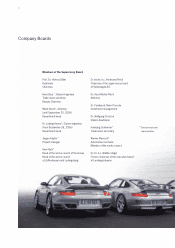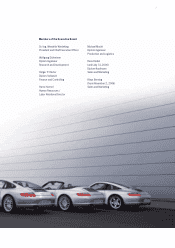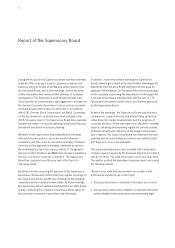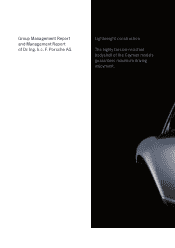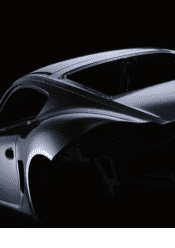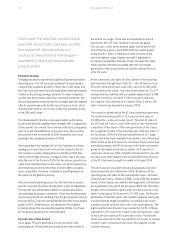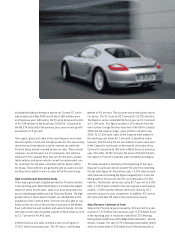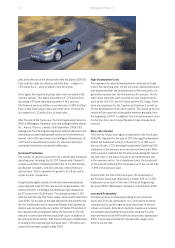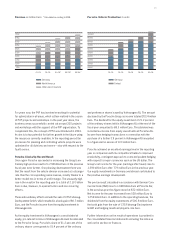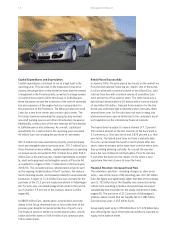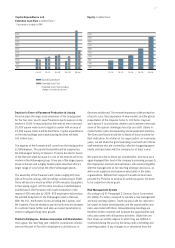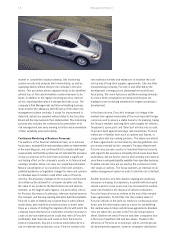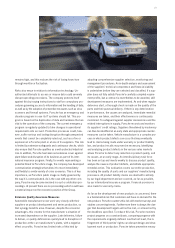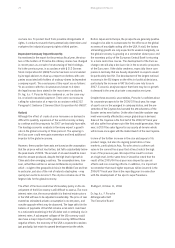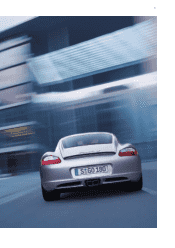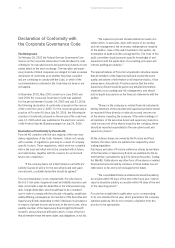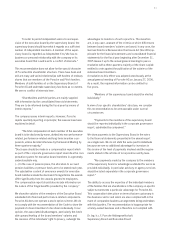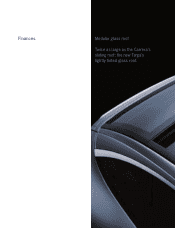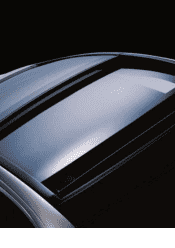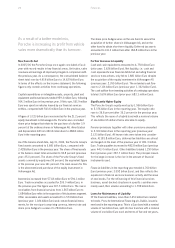Porsche 2005 Annual Report Download - page 18
Download and view the complete annual report
Please find page 18 of the 2005 Porsche annual report below. You can navigate through the pages in the report by either clicking on the pages listed below, or by using the keyword search tool below to find specific information within the annual report.
16
Capital Expenditures and Depreciation
Capital expenditures continued to run at a high level in the
reporting year. This was due to the expansion in business
volume, the preparation of new model versions and the renewal
of equipment in the Porsche plants, as well as to a large number
of construction projects within the Group. In Zuffenhausen,
these measures include the extension of the vehicle assembly
line and expansion of the engine factory in preparation for
the production of the Panamera. The Weissach plant incurred
costs for a new drive center and a motor sport center. The
first steps towards expanding the Leipzig factory involved
new staff parking spaces and other infrastructure measures.
Additionally, construction of the new museum at Porscheplatz
in Zuffenhausen is also underway. As a result, capitalized
investments for construction in the reporting year exceeded
40 million Euro not including the purchase of real estate.
407.4 million Euro was invested in property, plant and equip-
ment and intangible assets (previous year: 370.7 million Euro).
At our financial services entities, capital expenditures on spending
on leased assets amounted to 551.9 million Euro after 543.6
million Euro in the previous year. Capital expenditures on proper-
ty, plant and equipment and intangible assets at Porsche AG
accounted for a figure of 361.7 million Euro in the fiscal year
2005/06. This included various rationalization projects such
as the ongoing modernization of the IT systems, the replace-
ment of existing assets, and measures related to environmental
protection. A figure of 3.123 billion Euro was invested for the
purchase of the 21.2 percent equity investment in Volkswagen
AG. Porsche also concluded hedges that relate to the purcha-
se of a further 3.9 percent of the ordinary shares in Volks-
wagen AG.
At 488.8 million Euro, depreciation, amortization and write-
downs in the Group remained more or less at the level of the
previous year despite increased production of sports cars.
The financial services entities recorded depreciation, amorti-
zation and write-downs of 164.8 million Euro (previous year:
174.6 million Euro).
Bonds Placed Successfully
In January 2006, Porsche placed two bonds on the market via
Porsche International Financing plc, Dublin. One of the bonds
is a Euro bond with a nominal volume of two billion Euro, split
into two tranches with a nominal volume of one billion Euro
each and terms of five and ten years. The other bond was a
hybrid bond denominated in US dollars with a nominal volume
of one billion US dollars. Demand from investors for the two
bonds was extremely high so that they were oversubscribed
several times over. As Porsche does not have a rating, this
phenomenon bears special testimony to the company’s excel-
lent reputation on the international financial markets.
The hybrid bond is subject to annual interest of 7.2 percent.
The nominal interest on the two tranches of the Euro bond is
3.5 percent p.a. (five-year term) and 3.875 percent p.a. (ten-
year term). The hybrid bond does not have a maturity date.
Porsche can terminate the bond for the first time after five
years. Interest remains at the same level over the entire term,
thus providing planning certainty. As a result the investor
bears the risk of interest rate fluctuation. Porsche decides
if and when the bond is to be repaid. On the whole a very
opportune time was chosen to issue the bond.
Financial Structure: Increased Cash Flow
The extended cash flow – including changes to other provi-
sions – rose in the course of the reporting year. At 2.101 billion
Euro, the figure was significantly higher than that of the previous
year (1.332 billion Euro). Net liquidity was characterized by
inflows from operating activities and would have increased
substantially had it not been for the equity investment in Volks-
wagen AG. The purchase of 21.2 percent of Volkswagen’s
ordinary shares meant that net liquidity fell to 1.881 billion
Euro (previous year: 2.355 billion Euro).
Group equity went up by 1.956 billion Euro to 5.376 billion Euro,
also reflecting the issue of the hybrid bond that is reported as
equity in the balance sheet.
Management Report


